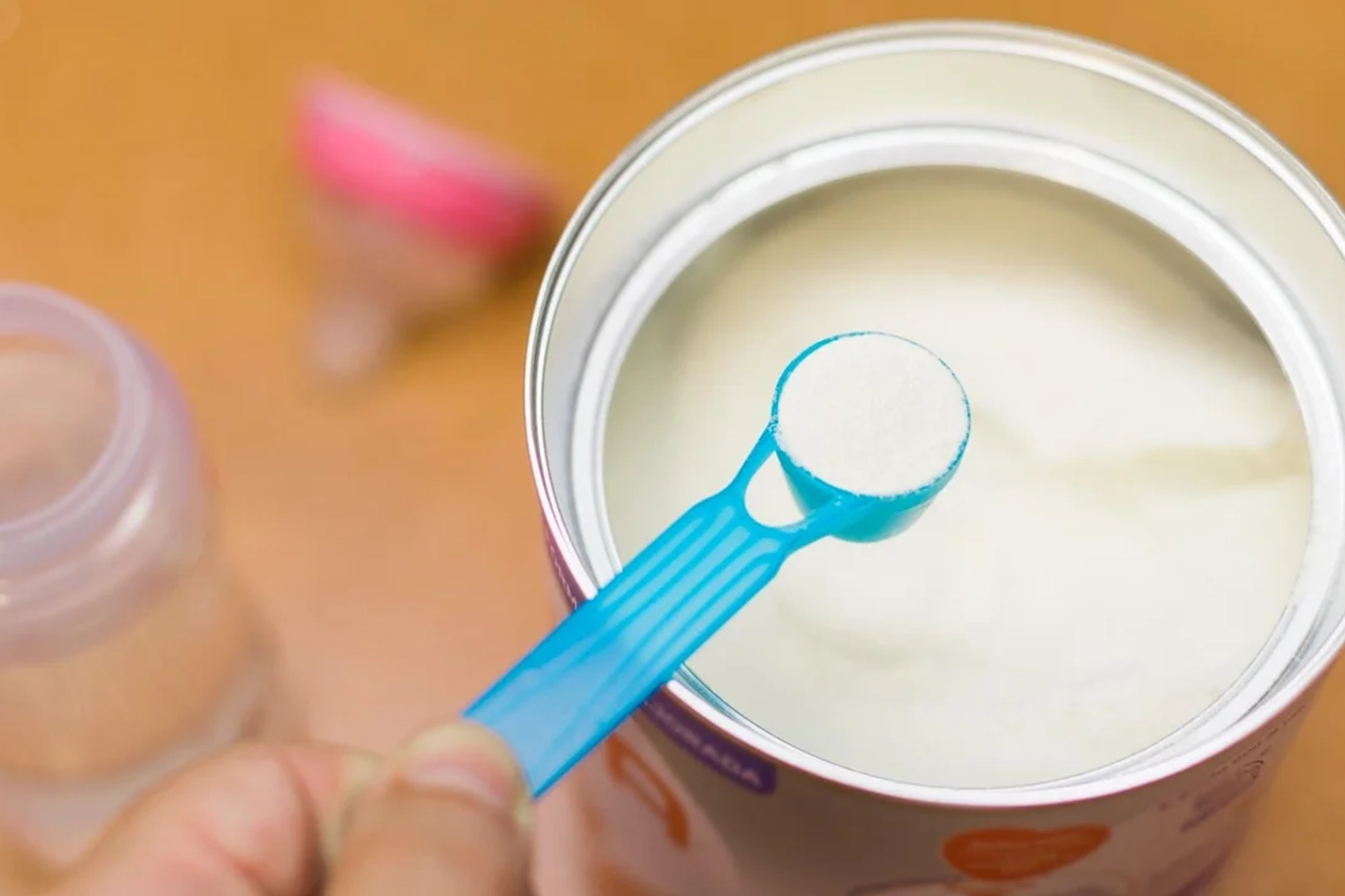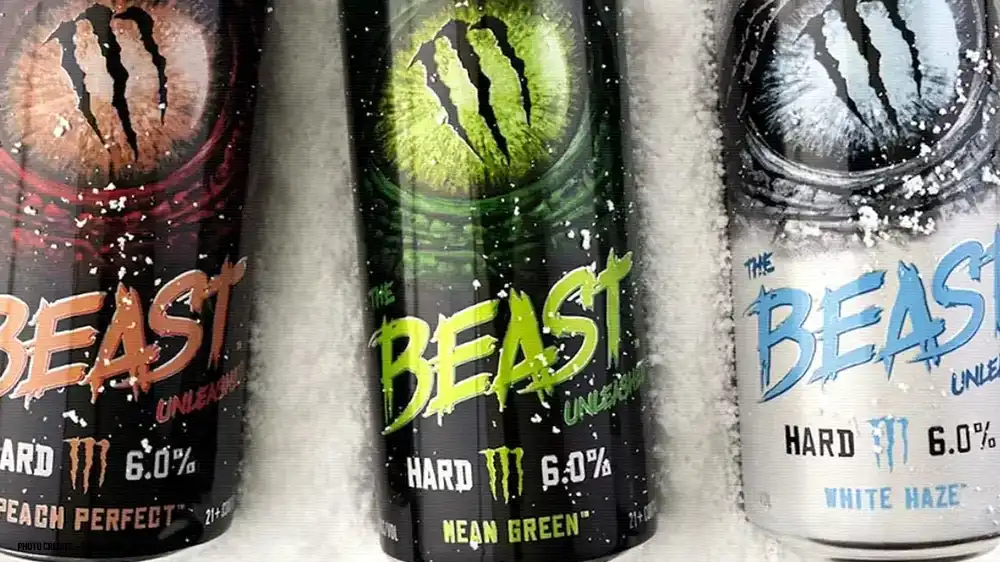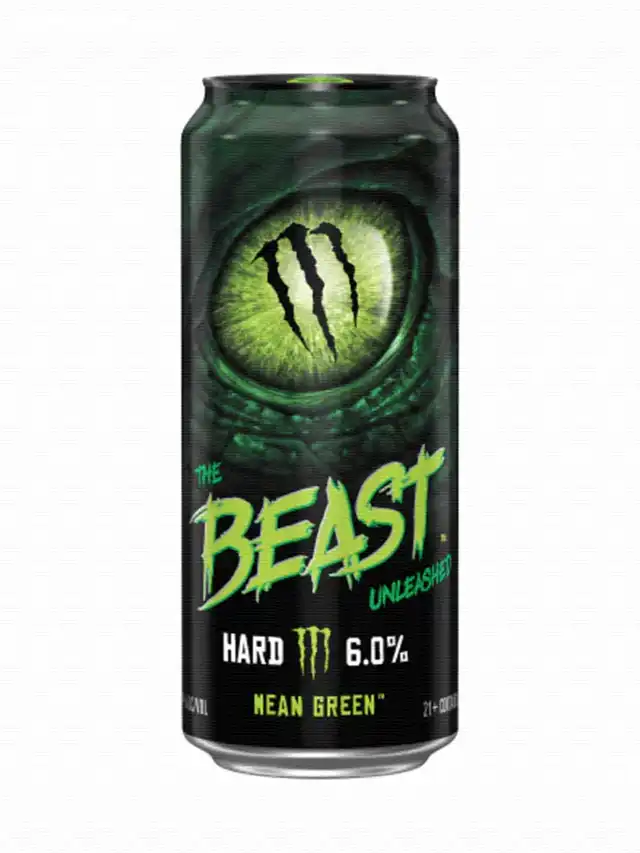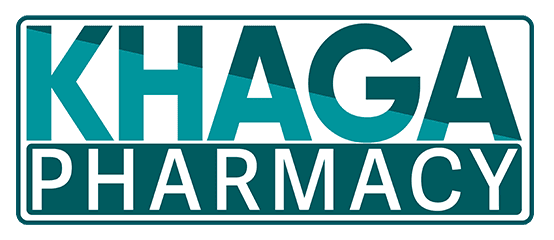
HEALTH BLOG
How Much Caffeine Does Monster Have? An Extended Guide
-
Rahul Priydarss
Explore the caffeine content in Monster Energy drinks with our detailed guide. Learn about the varying levels of caffeine in different Monster products, potential health effects, and tips for safe consumption. How Much Caffeine Does Monster Have? Find answers and insights to make informed choices about energy drink consumption here.
Introduction of How Much Caffeine Does Monster Have?:
Energy drinks have become a staple for many individuals seeking a quick boost in energy and alertness. Among the myriad of options available, Monster Energy stands out as one of the most popular choices. With its bold flavors and distinctive branding, Monster Energy has garnered a significant following. However, a critical aspect that often sparks curiosity and concern is its caffeine content. Understanding How Much Caffeine Does Monster Have? is essential for consumers to make informed decisions about their consumption, especially considering the potential health implications associated with high caffeine intake. This introduction will delve into the specifics of Monster Energy’s caffeine content, exploring its various formulations and how they compare to other caffeinated beverages.
What is Monster Energy?:
Monster Energy is an energy drink brand known for its bold flavors, high caffeine content, and distinctive branding. Launched in 2002 by Hansen Natural Company, which later rebranded as Monster Beverage Corporation, the drink quickly gained popularity among athletes, gamers, and individuals seeking a quick energy boost.
Monster Energy drinks are designed to enhance alertness, reduce fatigue, and improve physical and mental performance. They typically contain a combination of ingredients such as caffeine, taurine, B vitamins, ginseng, and various herbal extracts. These components work together to provide the stimulating effects that many consumers seek.

Table of Contents
The Origins and Evolution of Monster Energy Drinks:
Monster Energy drinks, a prominent player in the energy beverage market, have a history rooted in innovation and targeted marketing strategies. Here’s an overview of their origins and evolution. Monster Energy was launched in 2002 by Hansen Natural Corporation (now Monster Beverage Corporation), a company known for its natural sodas and juices. The brand entered the market at a time when energy drinks were gaining popularity among consumers seeking quick energy boosts and enhanced alertness.
The original Monster Energy drink was introduced with a bold design and a potent blend of ingredients aimed at providing a significant energy kick. Its distinctive logo and packaging quickly caught the attention of consumers, particularly in youth culture and extreme sports communities.
Evolution of Monster Energy Drinks:
Monster Energy drinks have evolved significantly since their inception in 2002. Initially launched by Hansen Natural Corporation (now Monster Beverage Corporation), the brand quickly established itself with its bold flavors and high caffeine content. The original Monster Energy drink’s distinctive packaging and potent energy boost captured the attention of young adults, athletes, and extreme sports enthusiasts.
Over the years, Monster Energy has expanded its product line to cater to diverse consumer preferences. This evolution includes the introduction of sugar-free options like Monster Energy Zero Ultra, coffee-infused drinks such as Monster Java, and hydrating energy beverages like Monster Hydro. The brand continually innovates with new flavors and limited-edition releases to keep consumers engaged.
Monster Energy’s global expansion has been a key aspect of its evolution. The brand adapts its offerings to suit regional tastes and preferences, launching localized flavors and formulations tailored to international markets. Additionally, Monster Energy’s aggressive marketing and sponsorship strategies have solidified its presence in the energy drink market. By sponsoring athletes, teams, and events in extreme sports, gaming, and music, Monster Energy has built a strong brand identity associated with high energy and performance.
Market Positioning of Monster Energy Drinks:
Monster Energy drinks occupy a distinct position in the beverage market, targeting young adults and millennials who prioritize energy and performance. Known for their high caffeine content and diverse product offerings, Monster appeals to consumers engaged in active lifestyles, from extreme sports enthusiasts to gamers seeking enhanced focus and stamina. The brand’s aggressive marketing strategies, including sponsorships of athletes and events, reinforce its image as a supporter of high-energy activities. This strategic approach not only enhances brand visibility but also cultivates a strong connection with its target audience, distinguishing Monster Energy as a premium choice in the competitive energy drink landscape.
The Role of Caffeine in Monster Energy:
Caffeine is the key ingredient in Monster Energy drinks, playing a crucial role in delivering the promised energy boost and enhancing mental alertness. As a natural stimulant, caffeine affects the central nervous system, providing several benefits that make it a popular component in energy drinks. Here are the main roles of caffeine in Monster Energy.
Boosting Energy Levels: Caffeine stimulates the release of adrenaline, the hormone responsible for the “fight or flight” response. This leads to increased heart rate and blood flow, making you feel more awake and energized.
Enhancing Mental Alertness: By blocking the neurotransmitter adenosine, which promotes sleep, caffeine helps maintain alertness and concentration. This effect is especially beneficial for individuals needing to stay focused for extended periods, such as students and professionals.
Improving Physical Performance: Caffeine has been shown to enhance physical performance by increasing the availability of fatty acids in the bloodstream, which muscles can use for energy. This can lead to improved endurance and strength, making Monster Energy a popular choice among athletes and fitness enthusiasts.
Reducing Perceived Fatigue: By affecting the brain’s perception of effort and fatigue, caffeine can make physical and mental tasks seem less strenuous, allowing individuals to perform better for longer periods.
Supporting Metabolism: Caffeine can temporarily boost metabolism, helping the body burn more calories even at rest. While this effect is modest, it contributes to the overall stimulating properties of Monster Energy drinks.

What is Caffeine:
Caffeine is a natural stimulant found in various plants, including coffee beans, tea leaves, cacao pods (used to make chocolate), and kola nuts. It belongs to a class of compounds called methylxanthines and is known for its stimulating effects on the central nervous system.
Effects of Caffeine: When consumed, caffeine acts as a mild central nervous system stimulant, which can help increase alertness and reduce fatigue. It achieves this by blocking the action of adenosine, a neurotransmitter that promotes relaxation and sleepiness. By inhibiting adenosine, caffeine promotes the release of other neurotransmitters such as dopamine and norepinephrine, which contribute to increased alertness and improved mood.
Sources of Caffeine: Caffeine is commonly consumed in beverages such as coffee, tea, and energy drinks. It is also found in various foods and medications, including chocolate and certain pain relievers. The amount of caffeine in these sources can vary widely, with coffee and energy drinks typically containing higher concentrations compared to tea and chocolate.
Caffeine Content: The caffeine content in beverages can vary based on factors such as the type of bean or leaf used, the brewing method, and serving size. For example, a typical 8-ounce (240-milliliter) cup of brewed coffee contains approximately 80-100 milligrams of caffeine, while the same amount of black tea contains about 30-50 milligrams. Energy drinks can have much higher caffeine concentrations, ranging from 80 milligrams to over 200 milligrams per serving.
Effects of caffeine on the body: Moderate consumption of caffeine (about 200-400 milligrams per day, or roughly 2-4 cups of coffee) is generally considered safe for most adults. Beyond enhancing alertness, caffeine can also temporarily improve cognitive function, physical performance, and endurance. However, excessive consumption can lead to side effects such as insomnia, jitteriness, increased heart rate, and digestive issues.
How Much Caffeine Does Monster Have?:
Monster Energy drinks come in many varieties, each with its unique formulation and caffeine content. Below is a detailed breakdown of the caffeine content in some of the most popular Monster Energy drinks.
Monster Energy Drink | Caffeine Content (mg)
- Advertisement -
| Serving Size (oz/ml) |
Monster Energy Original | 160 | 16 / 473 |
Monster Energy Lo-Carb
- Advertisement -
| 140 | 16 / 473 |
Monster Energy Zero Ultra | 140 | 16 / 473
- Advertisement -
|
Monster Energy Ultra Sunrise | 140 | 16 / 473 |
Monster Energy Assault | 160
- Advertisement -
| 16 / 473 |
Monster Rehab (Tea + Lemonade) | 160 | 16 / 473 |
Monster Java (various flavors)
- Advertisement -
| 188 | 15 / 443 |
Monster Energy Absolutely Zero | 140 | 16 / 473
- Advertisement -
|
Monster Energy Ultra Red | 140 | 16 / 473 |
Monster Energy Ultra Black | 140
- Advertisement -
| 16 / 473 |
As seen in the table, most Monster Energy drinks contain between 140 to 160 milligrams of caffeine per 16-ounce can, with some variations like Monster Java containing slightly more at 188 milligrams per 15-ounce can.
Products of Monster Energy Drinks:
Monster Energy offers a diverse lineup of 17-products that cater to different tastes, preferences, and lifestyles. Here are the various products in their extensive range.
1- Monster Energy Original: The flagship product known for its bold flavor and high caffeine content, available in various sizes to suit different consumption needs.
2- Monster Energy Zero Ultra: A zero-calorie, sugar-free option that retains the classic Monster taste with a lighter, less sweet profile. It appeals to consumers looking for energy without added sugars.
3- Monster Energy Ultra Sunrise: Features a citrusy and refreshing flavor profile inspired by a tropical sunrise, providing a fruity alternative to traditional energy drinks.
4- Monster Energy Rehab: Designed for hydration and energy recovery, blending Monster Energy with electrolytes and light flavors like tea and lemonade. It targets consumers seeking refreshment after physical exertion.
5- Monster Energy Hydro: A non-carbonated energy drink with added electrolytes, available in flavors like Mean Green and Blue Ice. Hydro is marketed towards individuals seeking a more hydrating energy drink option.
6- Monster Energy Java: Combines Monster’s energy blend with coffee flavors, offering a caffeinated twist on traditional coffee beverages. Varieties include Mean Bean and Salted Caramel.
7- Monster Energy Import: Features flavors and formulations popular in international markets, bringing unique tastes to consumers outside the United States.
8- Monster Energy Assault: Known for its bold flavor and targeted towards providing a powerful energy boost.
9- Monster Energy Punch: Offers a fruity and punchy flavor profile, catering to consumers who enjoy sweeter energy drink options.
10- Monster Energy Mule: Infused with ginger flavor, offering a unique twist on traditional energy drinks.
11- Monster Energy Cuba-Lima: Combines the flavors of lime and cola, providing a refreshing and distinctive taste experience.
12- Monster Energy Pacific Punch: Blends a variety of fruit flavors for a tropical taste sensation.
13- Monster Energy Pipeline Punch: Features a mix of tropical fruits with a hint of strawberry, offering a sweet and refreshing option.
14- Monster Energy Juiced: Combines the energy blend with fruit juice flavors like Mango Loco and Khaos, providing a fruity and energizing experience.
15- Monster Energy Dragon Tea: Combines the energy blend with tea flavors, available in Green Tea, White Tea, and Yerba Mate variants.
16- Monster Energy Gronk: Created in collaboration with NFL player Rob Gronkowski, offering a crisp and refreshing flavor.
17- Monster Energy Super Fuel: Designed for enhanced performance, providing a higher caffeine content and targeted at intense physical activities.
Ingredients in Monster Energy Drinks:
While caffeine is the primary stimulant in Monster Energy drinks, these beverages contain a blend of other ingredients that contribute to their energy-boosting effects. Understanding these ingredients can help consumers make informed decisions about their energy drink consumption.
1. Taurine: Taurine is an amino acid that plays a crucial role in cardiovascular function and the development and function of skeletal muscle, the central nervous system, and the cardiovascular system. It’s commonly found in energy drinks and is believed to improve athletic performance and reduce muscle fatigue.
2. Ginseng: Ginseng is a herb known for its potential to improve mental function, reduce stress, and increase energy levels. It is often included in energy drinks for its adaptogenic properties, which help the body cope with stress.
3. B Vitamins: Monster Energy drinks are fortified with several B vitamins, including B2 (Riboflavin), B3 (Niacin), B6, and B12. These vitamins are essential for converting food into energy, supporting brain function, and maintaining healthy skin and muscles.
4. L-Carnitine: L-Carnitine is a nutrient and dietary supplement that plays a significant role in the production of energy by transporting fatty acids into the mitochondria of cells. It’s included in energy drinks to support energy metabolism and improve exercise performance.
5. Glucuronolactone: Glucuronolactone is a naturally occurring compound produced in the human body. It’s included in energy drinks for its potential to improve mental performance and reduce fatigue.
6. Inositol: Inositol is a carbohydrate found in certain foods and also produced by the human body. It plays a role in cell membrane formation and is believed to have mood-enhancing properties.
7. Guarana: Guarana is a plant native to the Amazon basin, known for its seeds containing about twice the caffeine concentration found in coffee beans. It is included in energy drinks for its stimulant properties and ability to enhance mental alertness.
Potential Health Effects of Caffeine in Monster Energy Drinks:
Caffeine, the primary active ingredient in Monster Energy drinks, has several potential health effects, both positive and negative, depending on the amount consumed and individual sensitivity.
Positive Effects:
- Enhanced Alertness and Concentration: Caffeine can improve mental alertness and concentration by blocking the action of adenosine, a neurotransmitter that promotes sleepiness. This effect is beneficial for individuals needing to stay focused for extended periods.
- Improved Physical Performance: Caffeine stimulates the release of adrenaline, which can enhance physical performance by increasing endurance and strength. Athletes and fitness enthusiasts often use energy drinks like Monster to boost their performance during workouts or competitions.
- Mood Elevation: Moderate caffeine consumption has been associated with elevated mood and reduced risk of depression. The stimulating effects of caffeine can make individuals feel more energized and positive.
Negative Effects:
- Jitteriness and Anxiety: High caffeine intake can lead to symptoms such as jitteriness, restlessness, and anxiety. This is especially true for individuals who are sensitive to caffeine or consume large quantities in a short period.
- Insomnia: Due to its stimulating effects, consuming caffeine, particularly in the late afternoon or evening, can interfere with sleep patterns, leading to insomnia or poor-quality sleep.
- Increased Heart Rate and Blood Pressure: Caffeine can temporarily increase heart rate and blood pressure. While this is generally not a concern for healthy individuals, those with pre-existing heart conditions should be cautious about their caffeine intake.
- Digestive Issues: Some individuals may experience digestive issues such as stomach upset, acid reflux, or diarrhea when consuming high amounts of caffeine.
- Dependence and Withdrawal: Regular consumption of caffeine can lead to dependence. When a person who is accustomed to high caffeine intake suddenly reduces or stops consumption, they may experience withdrawal symptoms like headaches, irritability, fatigue, and depressed mood.
- Potential for Overconsumption: Energy drinks like Monster often contain high levels of caffeine, sometimes combined with other stimulants. This can increase the risk of overconsumption, particularly when consumed alongside other caffeinated beverages. Excessive caffeine intake can lead to serious health issues, including heart palpitations, seizures, and, in extreme cases, death.
Recommendations: To minimize the potential negative health effects of caffeine from Monster Energy drinks, it is essential to consume them in moderation. The FDA recommends a daily caffeine intake of up to 400 milligrams for most adults, roughly equivalent to four 8-ounce cups of coffee. However, individual tolerance can vary, so it is crucial to listen to your body and adjust your consumption accordingly. Additionally, avoiding energy drinks late in the day can help prevent sleep disturbances.
Recommended Caffeine Intake:
Caffeine is widely consumed and generally safe when taken in moderate amounts. However, understanding and adhering to recommended caffeine intake guidelines is essential for maintaining good health and avoiding potential adverse effects.
For adults, the U.S. Food and Drug Administration (FDA) suggests that up to 400 milligrams (mg) of caffeine per day is safe. This is approximately the amount found in four 8-ounce cups of brewed coffee. It’s important to note that individual tolerance to caffeine can vary widely, so some people might need to consume less. Pregnant women are advised to limit their caffeine intake to less than 200 mg per day, equivalent to about one 12-ounce cup of coffee, as high caffeine intake during pregnancy has been associated with an increased risk of miscarriage and low birth weight.
Adolescents should also be mindful of their caffeine consumption. The American Academy of Pediatrics advises that adolescents limit their caffeine intake to no more than 100 mg per day, roughly the amount in one 8-ounce cup of coffee or two 12-ounce cans of soda. Excessive caffeine can interfere with sleep and increase anxiety and heart rate in younger individuals. For children under 12, caffeine is not recommended. For older children, it is best to minimize consumption due to their smaller body size and increased sensitivity to caffeine’s effects.
Monitoring caffeine intake is crucial because it is present in many foods and beverages, making it easy to consume more than intended. Common sources of caffeine include coffee, tea, soft drinks, energy drinks, chocolate, and some medications. For instance, an 8-ounce cup of coffee contains about 80-100 mg of caffeine, while a 16-ounce can of Monster Energy contains about 160 mg. Always check the caffeine content on beverage and food labels to keep track of your intake.
FAQs about How Much Caffeine Does Monster Have?:
A1: Monster Energy drinks vary in caffeine content depending on the product. Generally, a 16-ounce can contain between 140 to 160 milligrams of caffeine, with some variations like Monster Java containing up to 188 milligrams per serving.
A2: When consumed in moderation, Monster Energy drinks are generally considered safe for healthy adults. However, individuals sensitive to caffeine or those with underlying health conditions should exercise caution and consult a healthcare professional.
A3: While caffeine can provide benefits like increased alertness and improved physical performance, excessive consumption can lead to side effects such as jitteriness, insomnia, increased heart rate, and digestive issues. It’s important to consume these drinks responsibly and within recommended limits.
A4: Monster Energy stands out with its bold flavors, extensive product lineup catering to different preferences (including sugar-free and coffee-infused options), and aggressive marketing strategies targeting athletes, gamers, and extreme sports enthusiasts.
A5: Before consuming Monster Energy drinks, consider your tolerance to caffeine, any existing health conditions, and other sources of caffeine in your diet. It’s advisable to adhere to recommended daily caffeine limits and avoid consuming these drinks close to bedtime to prevent sleep disturbances.

-Please remember, to always consult with healthcare professionals or Doctors for personalised advice related to medical conditions.
Conclusion:
In conclusion, understanding the caffeine content in Monster Energy drinks is essential for making informed choices about consumption. With varying levels across its product range, from 140 to 188 milligrams per serving, Monster offers options to suit different preferences and needs. It’s important to consider personal caffeine tolerance and adhere to recommended limits to enjoy these beverages safely. How Much Caffeine Does Monster Have? This guide has provided insights into Monster Energy’s caffeine content, health implications, and practical tips for responsible use.




